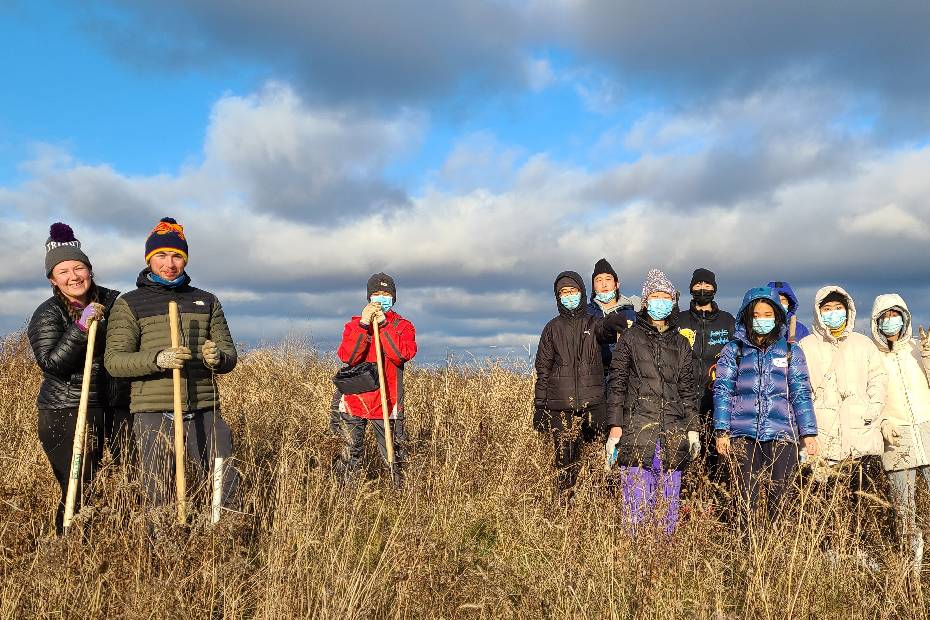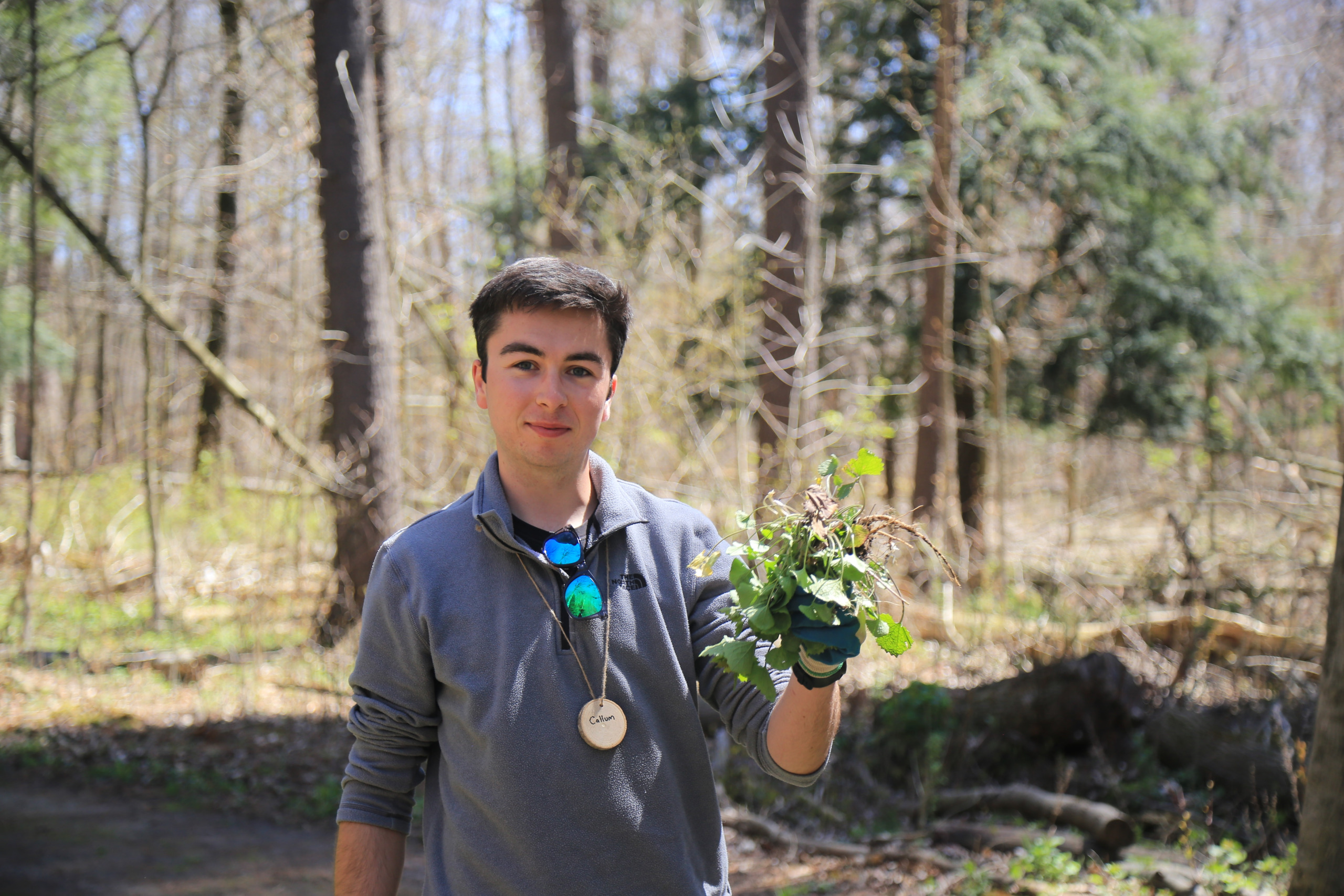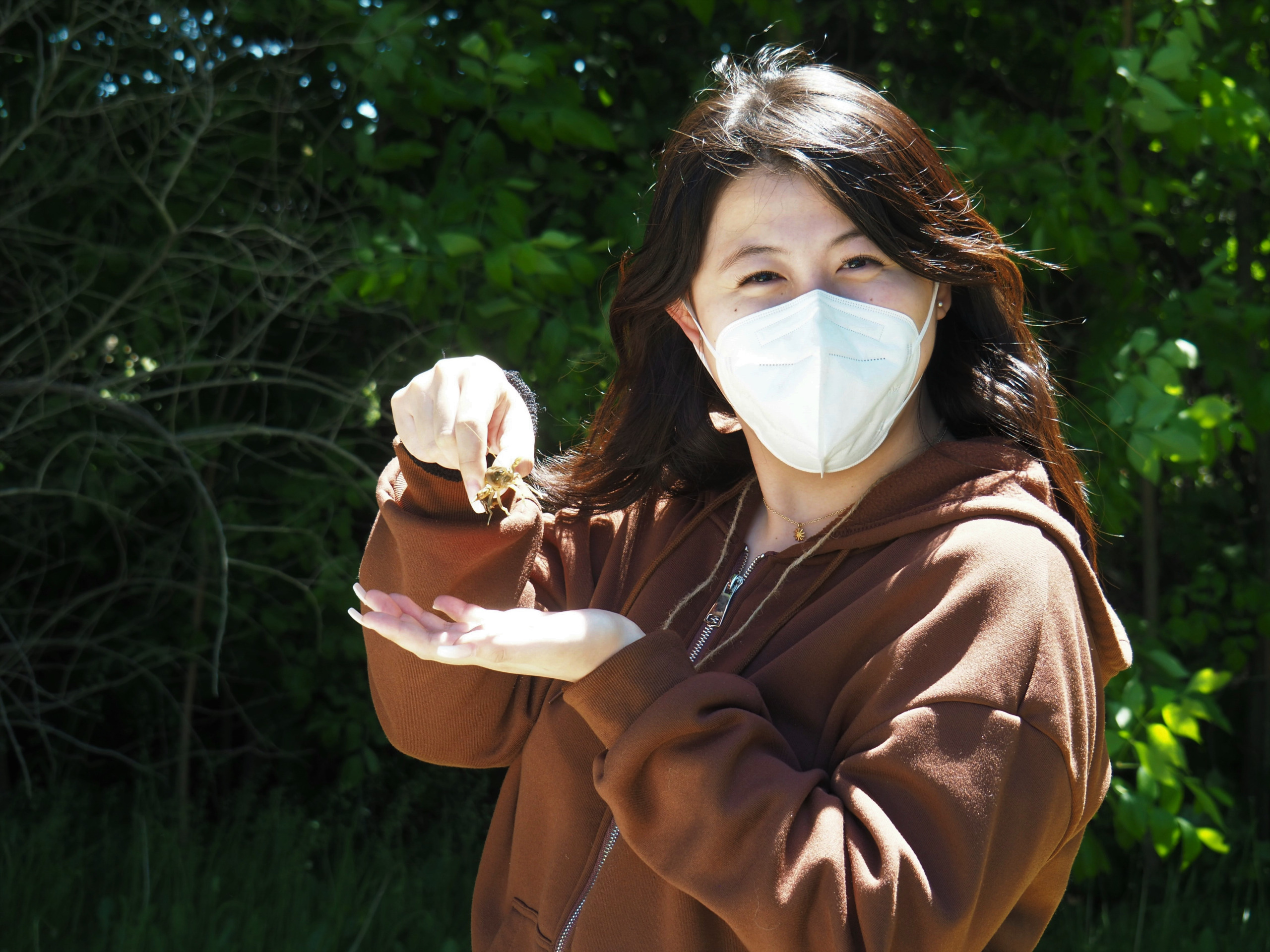Conservation Halton Program Inspires Young Newcomers to Build Connections and Explore Environmental Tech

Published December 21, 2022 • 6 Min Read
A hands-on approach to climate learning
Delivered virtually and in person over nine months, the first-year Green Space program featured more than 50 hours of programming, including 17 workshops. Climate action events like tree-planting and seed-bomb creation yielded real-world benefits, including removing invasive plants from conservation lands and the growth of pollinator habitats. The programming was designed with a focus on data collection and hands-on learning. “We also wanted to see youth exposed to the importance of Indigenous ecological knowledge,” says Bartley. The first workshop introduced the land with Indigenous guest speaker Doug Doolittle of Grandmother’s Voice. “It was great to hear how Indigenous communities lived sustainably and how this knowledge is now being combined with Western science to help with the current climate crisis,” says pilot program participant Callum Mullett Nice. “I wanted to get involved in the conservation sector in Ontario and help raise awareness of climate issues, having had an interest in the environment and outdoors from a young age.” Now 26 years old, Mullet Nice was born in the U.K. and came to Canada to study at Western University. He has since applied for and received his permanent residency. “I wanted to get involved in the conservation sector in Ontario and help raise awareness of climate issues, having had an interest in the environment and outdoors from a young age,” says Callum. Photo: Conservation Halton Foundation
“I wanted to get involved in the conservation sector in Ontario and help raise awareness of climate issues, having had an interest in the environment and outdoors from a young age,” says Callum. Photo: Conservation Halton Foundation
Transforming data collection into deeper local connections
For Conservation Halton, it was important that Green Space programming take a local, data-driven approach so that participants could learn how to monitor and measure the environmental phenomena they were studying. The topics covered in the program were water quality testing, terrestrial/aquatic species monitoring, and native seed collection, a module involving techniques including shaking the seed heads into a bucket and manually harvesting seeds from their pods. “Native seeds come from native plants, plants that are typical of an area,” Mullet Nice explains. “Collection is important as it allows us to plant more of these species, strengthening our native ecosystems.” Related story: How Technology is Helping Solve Big Water Issues in Canada “Data contextualizes climate change and inspires deeper connections to the cause and to one’s local natural surroundings,” explains Bartley. “Tech helps youth to not only understand climate change and build their climate literacy but also to feel connected and empowered to take climate action at home, at school, in the community.” For Green Space program participant Eva Zhu, the inspiration to take action occurred during a visit from her grandmother. “She came over to visit and said, ‘Oh, my gosh, what tree is that? It’s so pretty,’” Zhu recalls. “I didn’t have the Chinese name, so I had to search for it for her. There are many new Chinese immigrants, and most of them don’t speak English that well.” “She came over to visit and said, ‘Oh, my gosh, what tree is that? It’s so pretty,’” Zhu recalls. “I didn’t have the Chinese name, so I had to search for it.” Photo: Conservation Halton Foundation
Zhu, whose family is originally from Beijing, China, decided to put her Mandarin skills to good use by translating a bilingual local nature guide developed by Green Space to identify native, non-native, and invasive species and understand the impact climate change has on them.
“She came over to visit and said, ‘Oh, my gosh, what tree is that? It’s so pretty,’” Zhu recalls. “I didn’t have the Chinese name, so I had to search for it.” Photo: Conservation Halton Foundation
Zhu, whose family is originally from Beijing, China, decided to put her Mandarin skills to good use by translating a bilingual local nature guide developed by Green Space to identify native, non-native, and invasive species and understand the impact climate change has on them.
Welcoming a new generation of environmentalists
For newcomer youth, the Green Space Forum brought climate issues into sharp relief — and inspired lasting change. “Before, I felt very guilty,” says Zhu. “My high school is a five-minute walk from my house, and sometimes I would wake up late, so I would ask my parents to drive. Now, if my dad says he can drive me, I’ll say, ‘No, the environment!’” “I think the biggest thing I took away from the program was the effect climate change has on so many different aspects of life,” Mullet Nice says. “I now find that I can perhaps be more aware of how to reduce my impact. I was already aware of the benefits of a plant-based diet before the program; however, since setting a goal as part of the program to reduce my carbon footprint, I would say myself and my partner have drastically reduced the amount of animal products we consume, and try to source these locally where possible.” The first-year cohort of the Green Space engaged 36 youth in activities that empowered them with the knowledge, skills, and confidence to impact the fight against climate change directly. Eighty-eight per cent expressed interest in the Alumni Initiative, which would invite them to mentor incoming participants. “I’m honoured to be able to share my experience,” says Zhu. “The program gave me a sense of being and purpose at the time,” adds Mullet Nice. “I benefited greatly, ultimately being able to use the experience I gained to help me land my internship with the Nature Conservancy of Canada.” With all these successes, the Green Space program is just getting going. The goals for its second and third years include launching a public Community Climate Hub for open data, program storytelling, community learning and discussion.For more information about our strategy to support our clients in sectors across the economy in a socially inclusive transition to net-zero, and the risks and opportunities we face, please visit rbc.com/climate.
To learn more about Conservation Halton’s Green Space program, visit conservationhalton.ca/education.This article is intended as general information only and is not to be relied upon as constituting legal, financial or other professional advice. A professional advisor should be consulted regarding your specific situation. Information presented is believed to be factual and up-to-date but we do not guarantee its accuracy and it should not be regarded as a complete analysis of the subjects discussed. All expressions of opinion reflect the judgment of the authors as of the date of publication and are subject to change. No endorsement of any third parties or their advice, opinions, information, products or services is expressly given or implied by Royal Bank of Canada or any of its affiliates.
Share This Article





